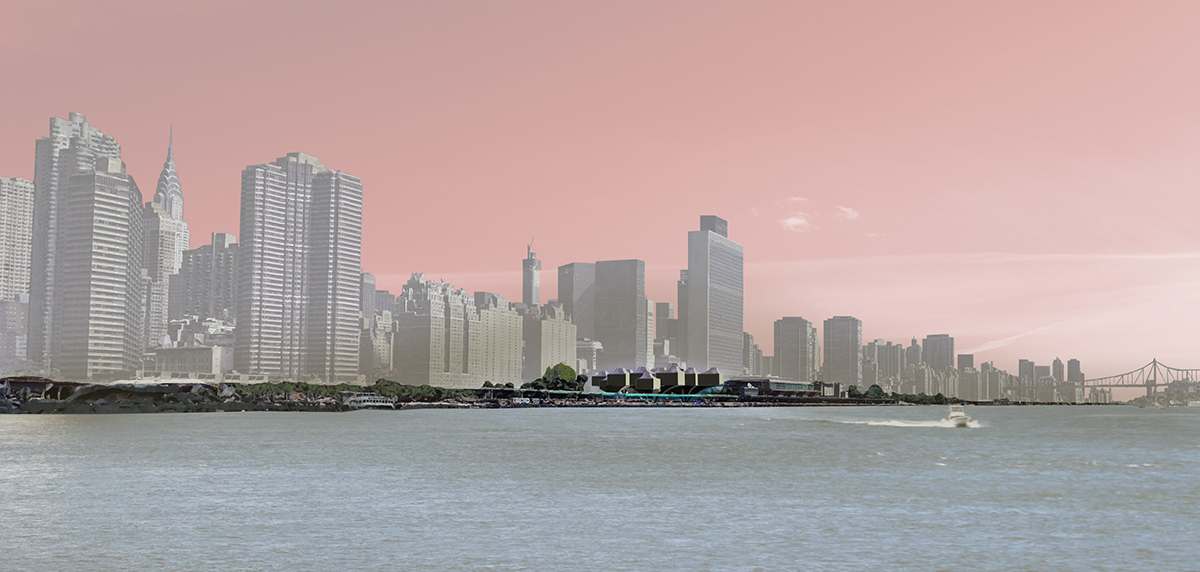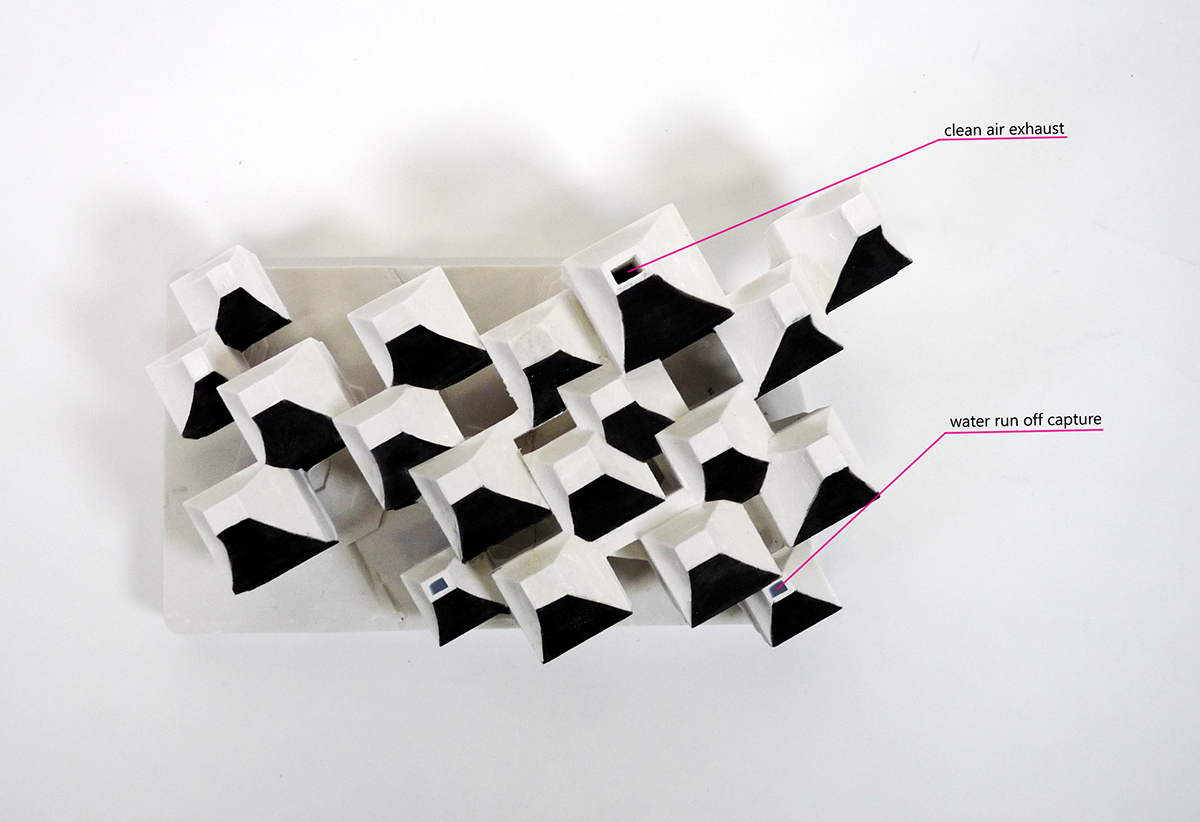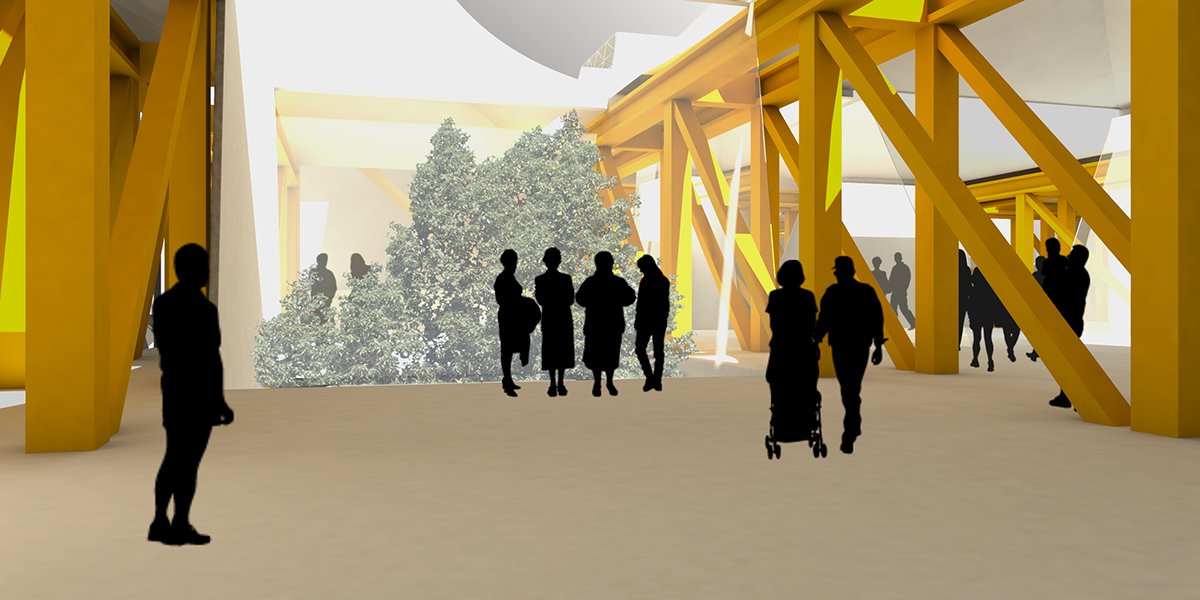
view from the river of the project in front of NYC skyline

clustered organization was derived from studies of barnacles while the forms themselves were optimized based on wind, solar and drainage studies

six different cell types can be located in a cluster based on site conditions

3d printed model showing intake for water and exhaust for clean air.

structural axon shows the system which allows for large cantilevers and a limited footprint allowing maximum control of wind off the river. cladding axon shows the panel systems chosen based on material research and their relationship to cardinal points.

cladding passively cleanses the air of VOC's and CO2, once saturated the system is designer for their easy removal for off site storage

sectional model

elevation of the south face showing the patterning of the solar panels and activated charcoal and the stepped site condition

3d printed model hand painted to resemble striped pattern

render below the building of the park space that is sheltered from the cold air off the river

reflected ceiling plan showing intake fans and the wind baffling provided by the suspended panels

sectional axon showing the air intake from the units over the FDR and from the Queens Mid-Town Tunnel below, clean air exhaust from the large unit, and the open expanses of the exterior allowed by the structural system

interior render of the flowing daylit open space within

sectional model


exterior render of the building next to the UN where it will act not only mitigate pollution but also act as a proof of concept of carbon negative projects the world must push for during the next century of the Anthropocene







